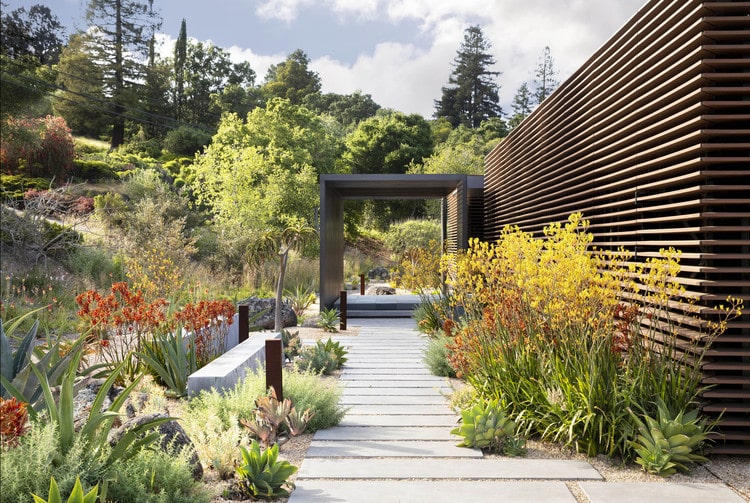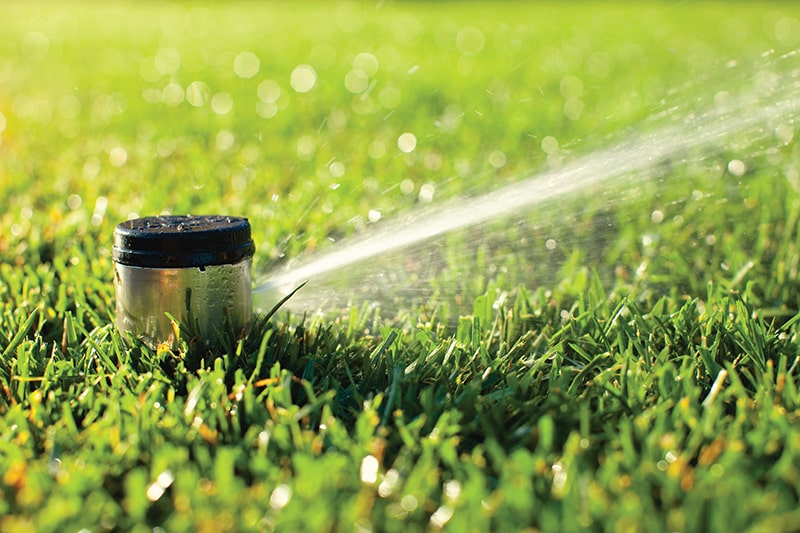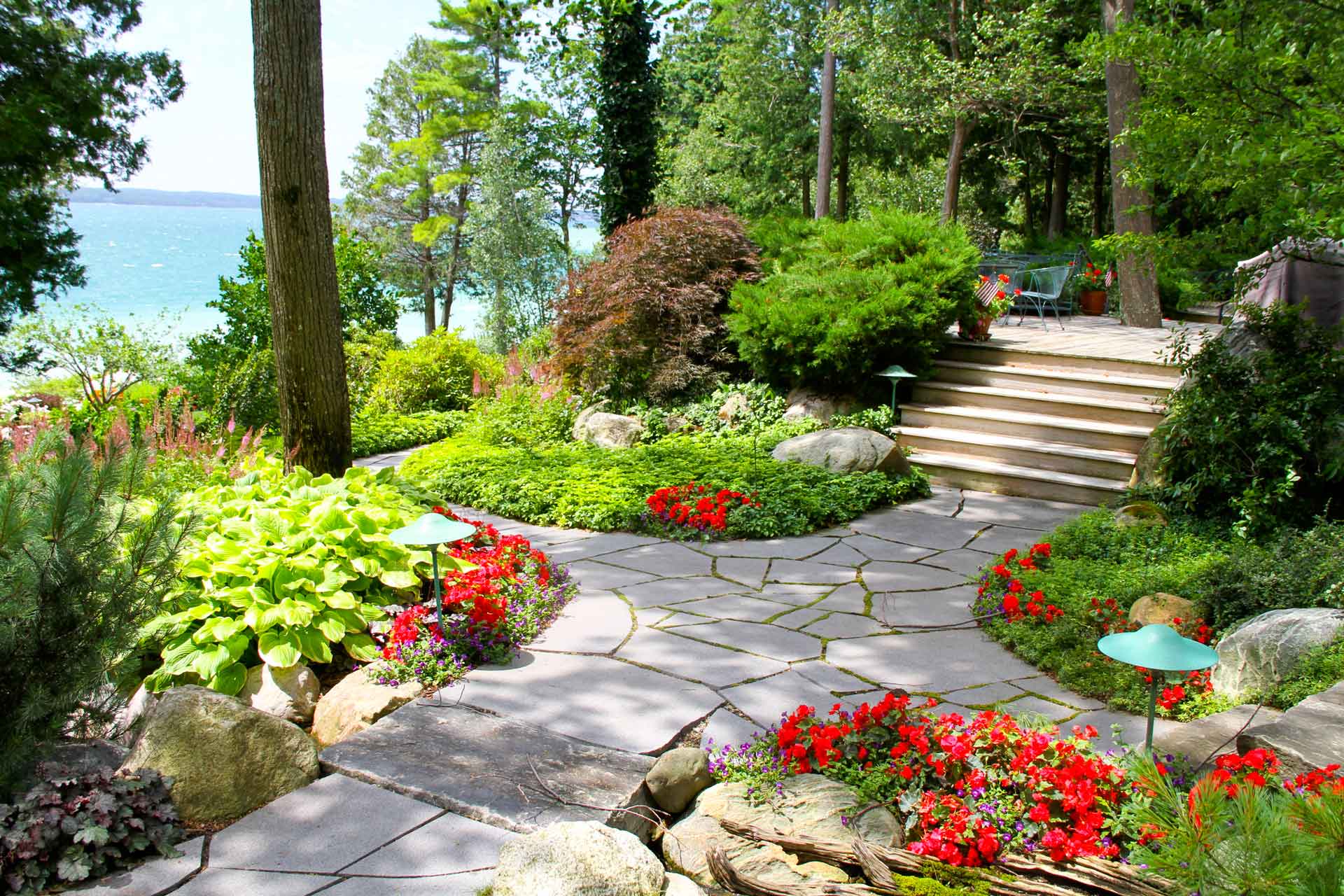Landscape design is the process of creating plans for the arrangement of outdoor elements such as plants, trees, hardscape, and other features. A well-designed landscape can enhance the beauty and functionality of your property, and can also provide a relaxing and enjoyable space for you and your family. Please join Mile High Lifescape to learn the basic principles of landscape design and how to design landscapes for beginners in the article below!

1. 5 basic principles of design a landscape
1.1 Color
Color is typically the most crucial element in a successful landscape design. Create contrast by combining flowers of warm and cool colors. Besides, for a combined look, stick to flowers within either the warm or cool color group. Using a color wheel can assist in determining the colors to be used in your landscape design.
1.2 Form
The form of a plant is an important element to consider in landscape design. Trees, in particular, come in a wide variety of shapes and sizes, which can have a significant impact on the overall look and feel of a landscape.
It is also important to consider the form of individual plant components. For example, the leaf form of one tree species can be significantly different from that of another tree species.
1.3 Texture
Texture is mainly a visual aspect in landscape design. For instance, a plant’s texture is often determined by the size of its leaves. The plant texture of one bedding plant may be considered finer or coarser than that of a neighboring plant due to differences in leaf size.
To add diversity to your landscape design plans and prevent excessive uniformity, incorporate plants that have varying textures. The element of texture can be subtle enough to maintain the overall unity of a garden.
1.4 Line
The element of line in design refers to the arrangement of borders to guide a viewer’s eye movements. Eye movement is unconsciously influenced by how plant groupings fit or flow together, both horizontally and vertically. For instance, a straight row of trees can be used as a barrier to indicate boundaries and direct a viewer’s gaze.
1.5 Scale
Scale refers to the relative size of one component compared to adjacent components. For instance, if shrubs are planted alone in front of a large home with a deep yard, they should not appear as dwarf plantings without any transition. However, they may be appropriately scaled to a smaller yard and home without requiring a transition.
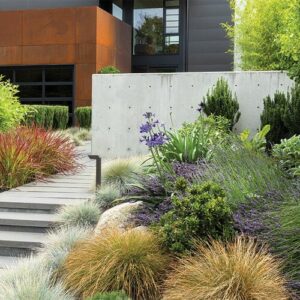
2. How to design landscape for beginners
Here are some basic steps on how to design a landscape:
2.1 Determine landscape needs and wants
What do you want to use your landscape for? Do you want a space for entertaining, relaxing, playing, or all of the above? Once you know what you’re looking for, you can start to develop a plan.
2.2 Analyze your location
Take a close look at your property and identify its key features, such as the slope of the land, the amount of sunlight it receives, and the type of soil. This information will help you choose the right plants and materials for your landscape.
2.3 Create a base map
Draw a to-scale map of your property, including any existing features such as buildings, patios, and trees. This will give you a visual reference to work with as you develop your design.
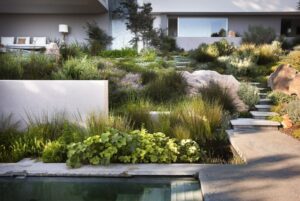
2.4 Develop a concept plan
Once you have a base map, you can start to sketch out your ideas for the layout of your landscape. This is where you’ll decide where to place plants, hardscape elements, and other features.
2.5 Choose your plants and materials
When choosing plants, be sure to consider factors such as their size, shape, color, and sun and water requirements. You’ll also want to select materials that are durable and low-maintenance.
2.6 Create a planting plan
Once you’ve chosen your plants, create a detailed planting plan that shows the location and spacing of each plant. This will help you ensure that your plants have enough room to grow and thrive.
2.7 Install your landscape
Once you have a planting plan, you can start installing your landscape. If you’re not comfortable doing it yourself, you can hire a professional landscape contractor.
2.8 Maintain your landscape
Once your landscape is installed, it’s important to maintain it properly. This includes watering, fertilizing, and weeding your plants, as well as trimming and pruning them as needed.
3. Tips and advice for landscape design
Here are some additional tips for landscape design:
- Use focal points to draw the eye. A focal point could be a tree, a sculpture, or a water feature. Place it in a strategic location to create a sense of balance and harmony in your landscape.
- Create layers of interest. Use plants of different heights, textures, and colors to create a layered effect in your landscape. This will add visual depth and interest.
- Consider your climate. When choosing plants and materials, be sure to consider your local climate. Choose plants that are suited to your growing zone and that will thrive in your climate conditions.
- Don’t be afraid to experiment. There are no hard and fast rules when it comes to landscape design. Have fun and experiment with different ideas to create a landscape that is unique and reflects your personal style.
If you’re feeling overwhelmed, there are many resources available to help you with landscape design. You can find Mile High Lifescape company to help you create the perfect landscape for your needs and budget.
Contact us:
- Address: 1427 S Federal Blvd, Denver, CO 80219
- Hotline: (303) 877-9091
- Email: [email protected]
